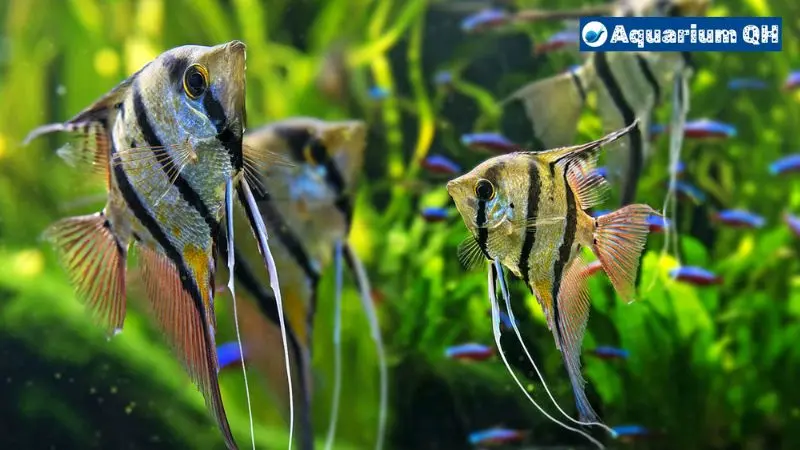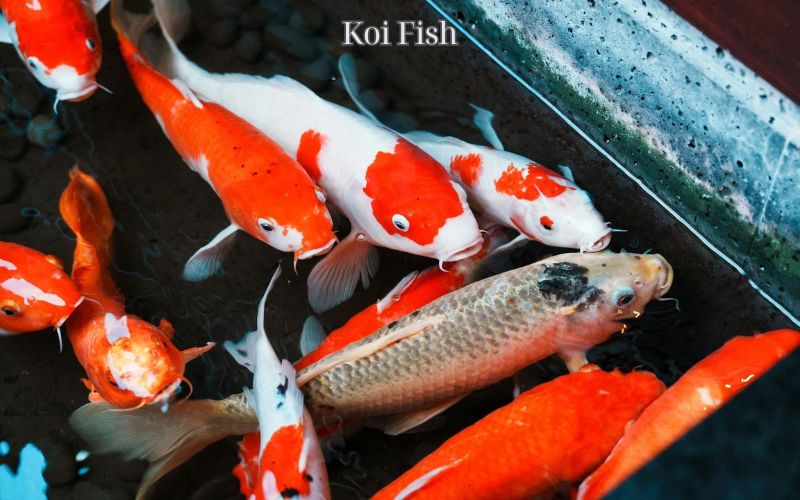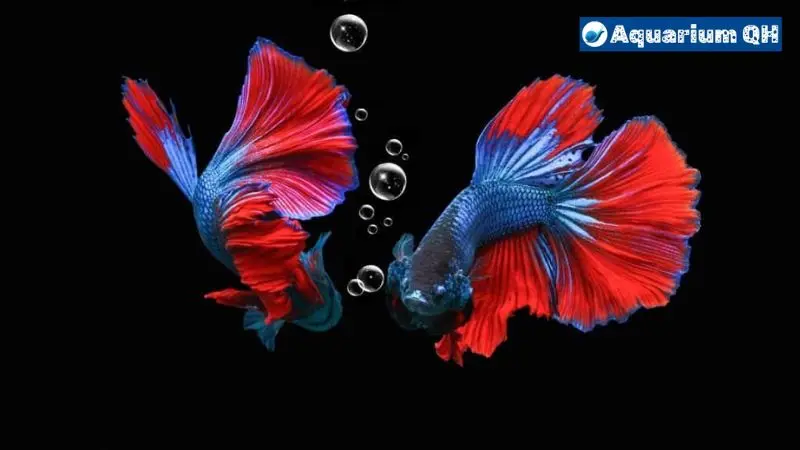Welcome to the enchanting realm of angelfish and neon tetras, where vibrant colors dance beneath the water’s surface, captivating enthusiasts worldwide. In this comprehensive guide,
Aquarium QH ‘ll delve into the fascinating aspects of these exotic creatures, offering insights into their care, behavior, and optimal tank conditions. Whether you’re a novice hobbyist or a seasoned aquarist, join us on a journey to unlock the secrets of angelfish and neon tetras.
Exploring Angelfish and Neon Tetras
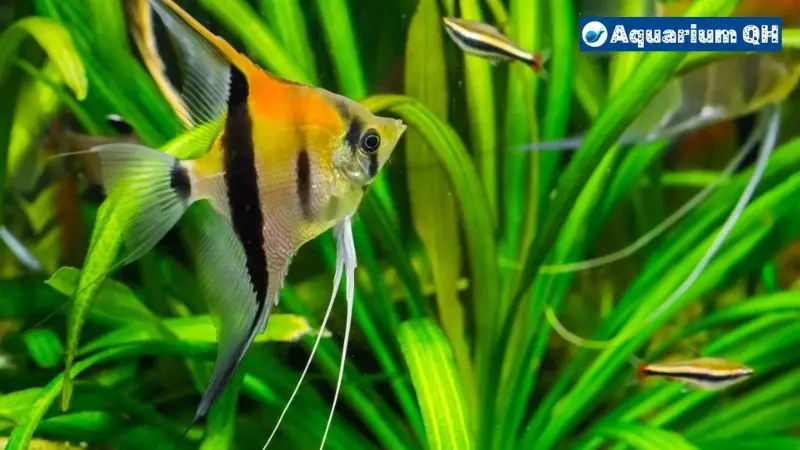
The Allure of Angelfish:
Angelfish, with their graceful movements and distinctive vertical stripes, are prized for their elegance and beauty. These freshwater marvels belong to the cichlid family, originating from the Amazon Basin in South America. With their expansive fins and iridescent scales, angelfish add a touch of sophistication to any aquarium setting.
Angelfish are known for their peaceful demeanor, making them ideal companions for a variety of tank mates. However, they do exhibit territorial behavior during breeding, so providing ample space and hiding spots is essential for a harmonious environment.
Neon Tetras: Tiny Wonders of the Aquarium:
Neon tetras, renowned for their neon-blue streaks and fiery red accents, are among the most popular tropical fish species. Originating from the rivers of South America, these petite charmers thrive in schools, creating a mesmerizing spectacle as they dart and glide through aquatic plants.
Neon tetras are prized for their peaceful nature and adaptability, making them suitable for community tanks with compatible companions. Their small size and tranquil disposition make them an excellent choice for both beginners and experienced aquarists alike.
Creating the Perfect Habitat

Aquarium Setup and Maintenance:
When housing angelfish and neon tetras, it’s crucial to replicate their natural habitat to ensure their well-being and longevity. Opt for spacious tanks with ample swimming room, as angelfish can grow up to six inches in height. Incorporate live plants and driftwood to mimic their native environments, providing hiding spots and refuge.
Maintaining water quality is paramount for the health of angelfish and neon tetras. Perform regular water changes, monitor pH levels, and invest in a reliable filtration system to remove impurities and maintain optimal conditions. Additionally, ensure proper lighting and temperature control to mimic their native ecosystems.
Feeding and Nutrition
Dietary Requirements:
Angelfish and neon tetras are omnivores, requiring a balanced diet to thrive. Offer a variety of foods, including high-quality flakes, pellets, and frozen or live foods such as bloodworms and brine shrimp. Supplement their diet with fresh vegetables and algae wafers to provide essential nutrients and promote vibrant colors.
Feed angelfish and neon tetras small, frequent meals throughout the day, ensuring they consume their food within a few minutes to prevent overfeeding and maintain water quality. Monitor their eating habits and adjust their diet as needed based on their growth and activity levels.
Breeding and Reproduction
Breeding Behavior:
Angelfish and neon tetras exhibit fascinating courtship rituals and breeding behaviors, making them a joy to observe in a home aquarium. Angelfish typically form monogamous pairs and engage in elaborate courtship displays, with the male leading the female to a suitable spawning site.
Neon tetras are prolific egg layers, scattering their eggs among fine-leaved plants or moss. Provide a separate breeding tank with ample vegetation and subdued lighting to encourage spawning behavior. After spawning, remove the adult fish to prevent them from consuming the eggs, and monitor water conditions closely to ensure the survival of the fry.
FAQs (Frequently Asked Questions)
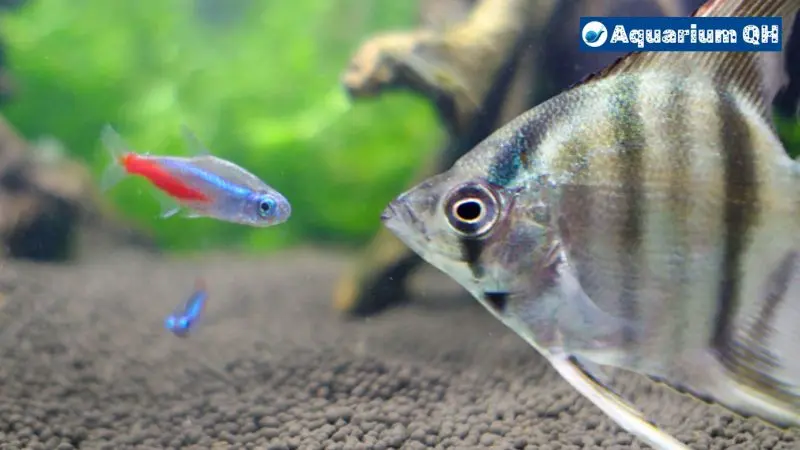
- How often should I feed angelfish and neon tetras?
- Angelfish and neon tetras should be fed small amounts multiple times a day to ensure they receive adequate nutrition without overfeeding. Monitor their eating habits and adjust the feeding frequency as needed.
- What size tank is suitable for angelfish and neon tetras?
- Angelfish require a spacious tank of at least 20 gallons, while neon tetras thrive in smaller tanks of 10 gallons or more. Providing ample swimming space and hiding spots is essential for their well-being.
- Do angelfish and neon tetras require special water parameters?
- Angelfish and neon tetras prefer slightly acidic to neutral water with stable pH levels between 6.5 to 7.5. Maintain water temperatures between 75°F to 82°F for optimal health and vitality.
- Can angelfish and neon tetras coexist with other fish species?
- Yes, angelfish and neon tetras are generally peaceful and can coexist with a variety of community fish species. However, avoid housing them with aggressive or fin-nipping fish that may harass or injure them.
- How can I differentiate between male and female angelfish?
- Male angelfish typically have a more pronounced dorsal fin and a broader forehead compared to females. During breeding, males may develop small breeding tubes called papilla near their ventral fins.
- What tank mates are compatible with angelfish and neon tetras?
- Compatible tank mates for angelfish and neon tetras include peaceful community fish such as corydoras catfish, gouramis, and rasboras. Avoid aggressive or territorial species that may intimidate or harm them.
Conclusion
In conclusion, angelfish and neon tetras are exquisite additions to any aquarium, enchanting enthusiasts with their vibrant colors and captivating behaviors. By providing a suitable habitat, proper nutrition, and attentive care, you can create a thriving ecosystem where these aquatic wonders can flourish. Whether you’re a novice hobbyist or a seasoned aquarist, embrace the beauty of angelfish and neon tetras and embark on a journey filled with wonder and discovery.

